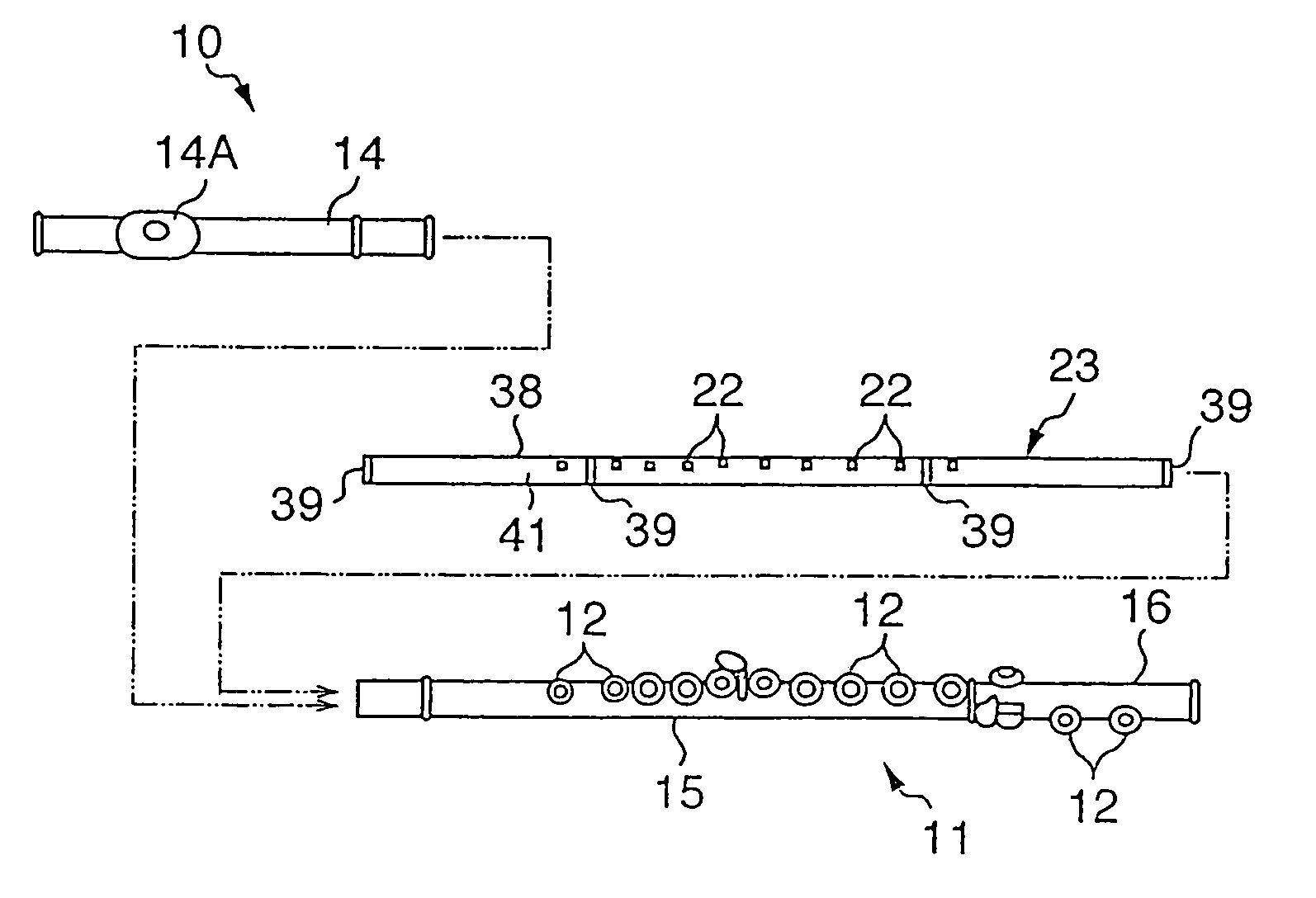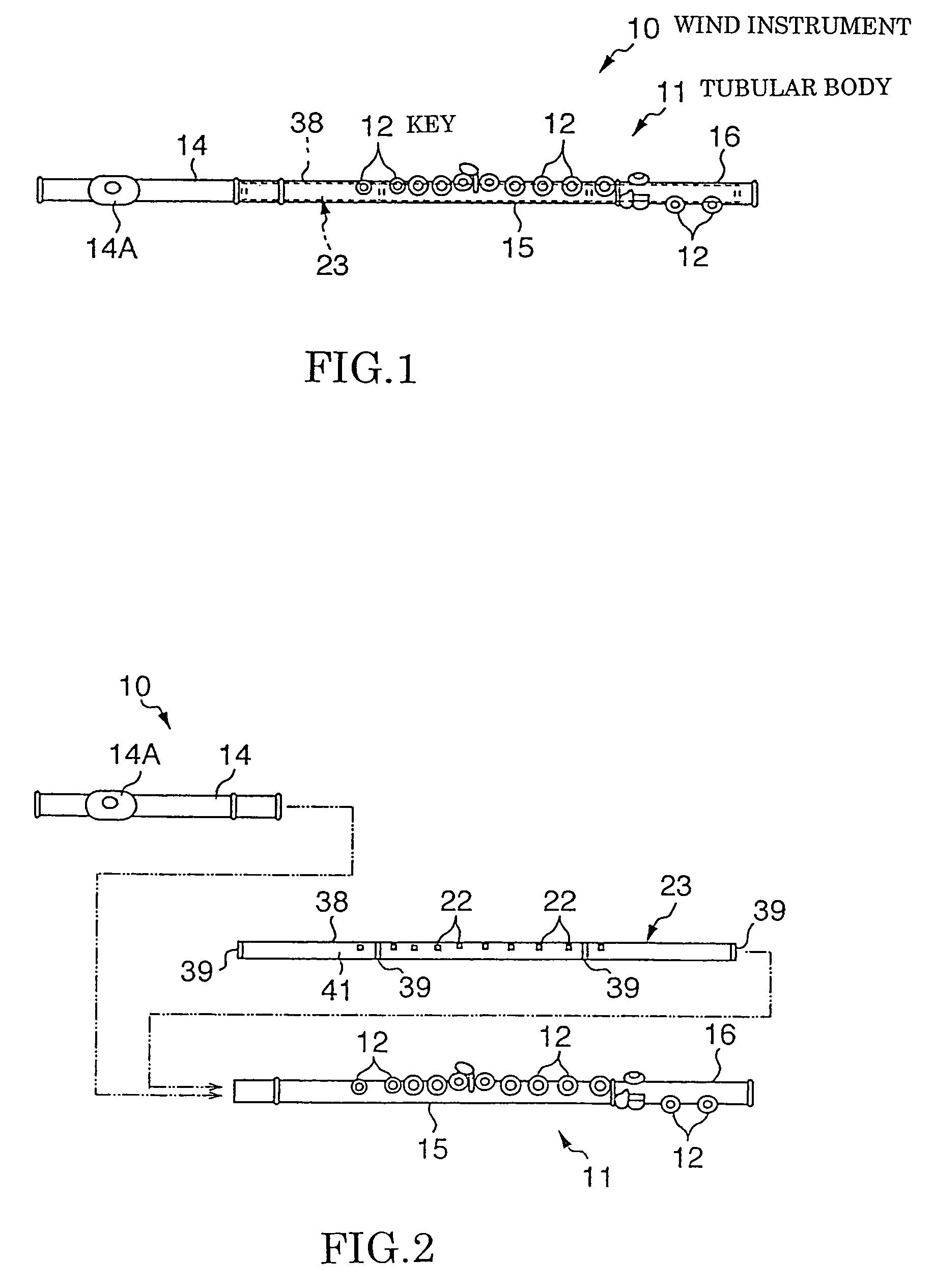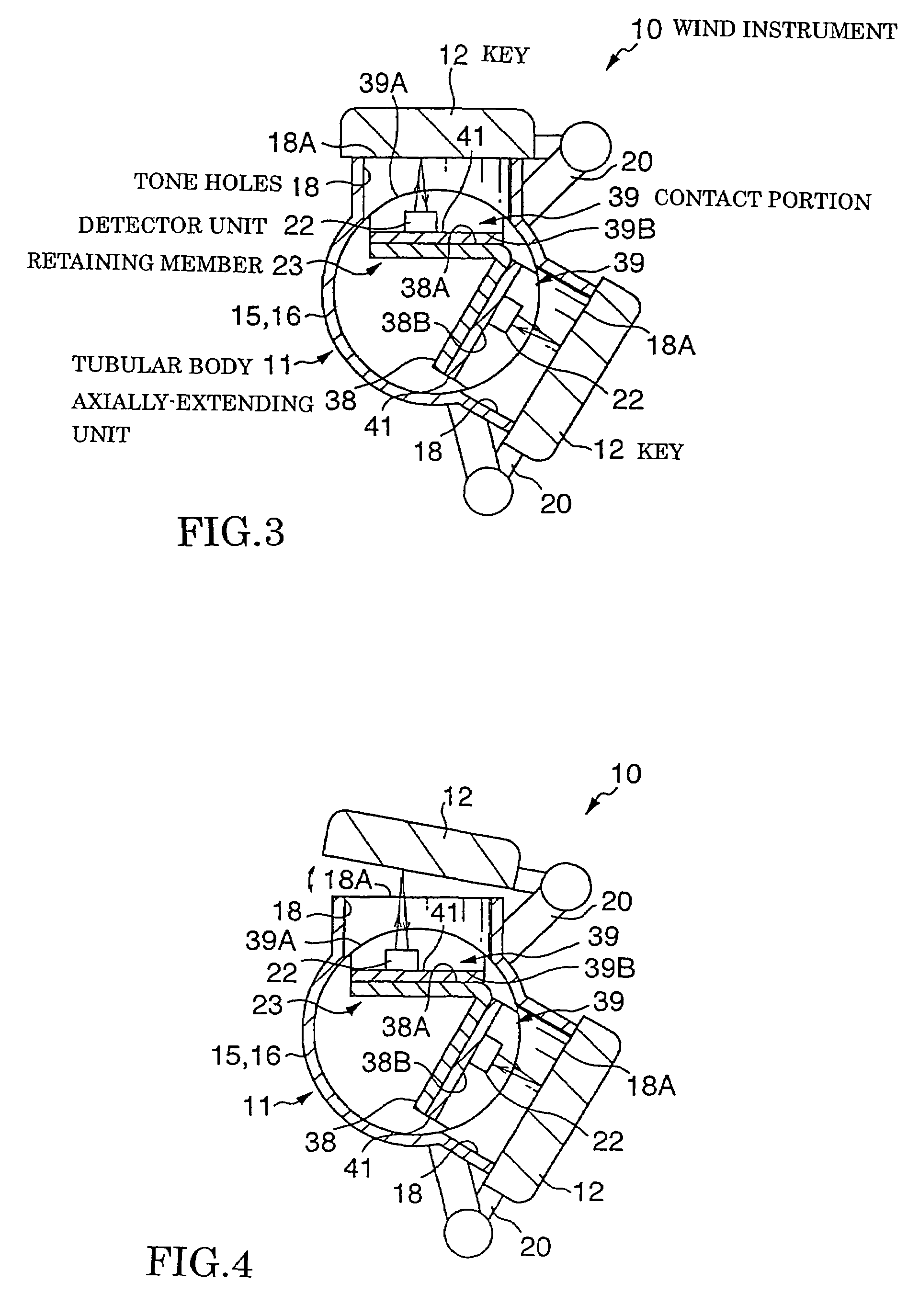Electric wind instrument and key detection structure thereof
a technology for wind instruments and key detection, applied in instruments, pulse techniques, keyboard-like device coding, etc., can solve the problems of cumbersome and difficult operation of disassembly of keys and the like at the time of repair or care of wind instruments, cumbersome and cumbersome, etc., and achieves the effect of simple construction and easy attachment and removal
- Summary
- Abstract
- Description
- Claims
- Application Information
AI Technical Summary
Benefits of technology
Problems solved by technology
Method used
Image
Examples
Embodiment Construction
[0029]FIG. 1 is a schematic plan view of a wind instrument to which is applied a key detection structure in accordance with an embodiment of the present invention, and FIG. 2 is an exploded view of the wind instrument shown in FIG. 1. This wind instrument 10 is in the form of an acoustic-type flute of the conventionally-known construction, which can perform predetermined tone pitches by vibrating air using any of the conventional performance styles. The wind instrument 10 comprises a tubular body 11 extending in a left-right direction of FIG. 1, and a plurality of keys 12 provided on the tubular body 11.
[0030]The tubular body 11 comprises a head joint (or head section) 14 having an embouchure plate 14A, a main tube (or main body) 15 connectable to one end (right end in FIG. 2) of the head joint 14, and a foot joint (or tail section) 16. As seen from a schematic vertical sectional view of FIG. 3, the main tube 15 and foot joint 16 have a plurality of tone holes 18 formed therethrough...
PUM
 Login to View More
Login to View More Abstract
Description
Claims
Application Information
 Login to View More
Login to View More - R&D
- Intellectual Property
- Life Sciences
- Materials
- Tech Scout
- Unparalleled Data Quality
- Higher Quality Content
- 60% Fewer Hallucinations
Browse by: Latest US Patents, China's latest patents, Technical Efficacy Thesaurus, Application Domain, Technology Topic, Popular Technical Reports.
© 2025 PatSnap. All rights reserved.Legal|Privacy policy|Modern Slavery Act Transparency Statement|Sitemap|About US| Contact US: help@patsnap.com



